Fall brings the prettiest fiery foliage to Minnesota! But before you get too close, watch out for these Poisonous Plants.
Full of wetlands, lakes, and forests, Minnesota is a thriving habitat for all types of vegetation, including poisonous plants! As you gear up to enjoy autumn’s natural magic, so do these plants that come alive with their flame-hued foliage, berries, and blooms.
And some of them are more dangerous than you think! Let’s look at these toxic plants that inhabit the Star of the North and learn to identify them so you may enjoy fall itch and harm-free!
Poisonous Plants in Minnesota
1. Poison Ivy
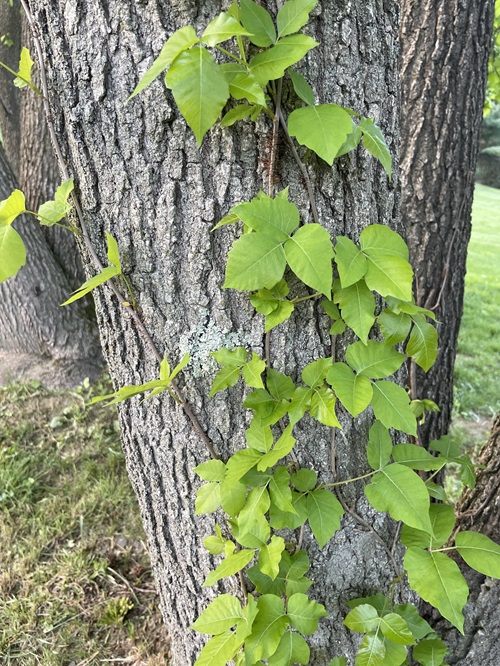
Botanical Name: Toxicodendron radicans
Ever heard the saying, “Leaves of three, let it be?” You can thank poison ivy for this ominous reputation it has given any plant with three leaves! Found freely in wooded areas, trails, and gardens all over Minnesota, you’ll easily spot it with its shiny three-leaf clusters that turn orange and red in fall. And when you see it, stay far away to avoid its rash-inducing oils.
Also, be cautious of direct or indirect contact through pets or clothing, and wash the affected area immediately with soap and water. Poison ivy can be annoying, but it’s not deadly. It can cause a severe allergic reaction in some people, though. Check out all these plants that look like poison ivy.
2. Swamp Milkweed
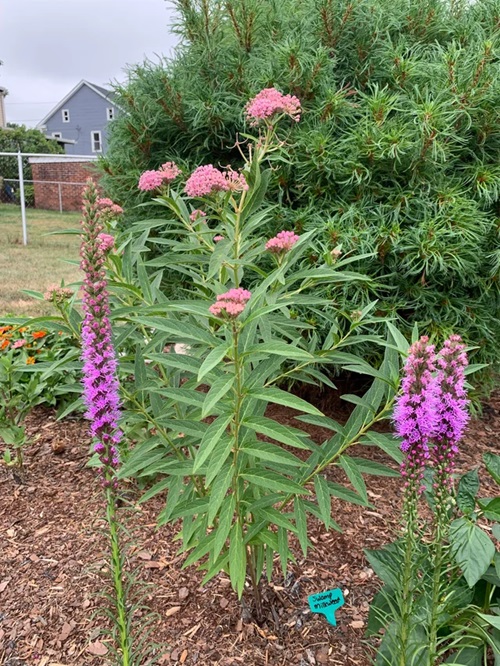
Botanical Name: Asclepias incarnata
You will often spot swamp milkweed in areas with moist, nutrient-rich soils. It’s easily recognizable by its tall, stout stems and large, hairy leaves. It even has clusters of pink or purple flowers.
Its sap contains a milky substance that can irritate sensitive skin. In the fall, it produces seeds that can cause digestive issues if ingested.
3. Poison Sumac

Botanical Name: Toxicodendron vernix
With white, berry-like fruits, poison sumac’s leaves turn bright red in fall. Native to the swampy, marshy wetlands of this region, this shrub can grow up to 10 feet tall and has smooth-edged waxy leaves and bright red berries. Avoid areas with standing water where this plant will likely grow, especially if you spot prominent red leaves of three and white berries!
The plant contains urushiol—a chemical that triggers severe allergic reactions. If you come into contact with any part of the plant, you will develop an itchy, red, and blistering rash. If you ingest it, you’ll experience vomiting and diarrhea and might even have difficulty breathing.
4. Wild Parsnip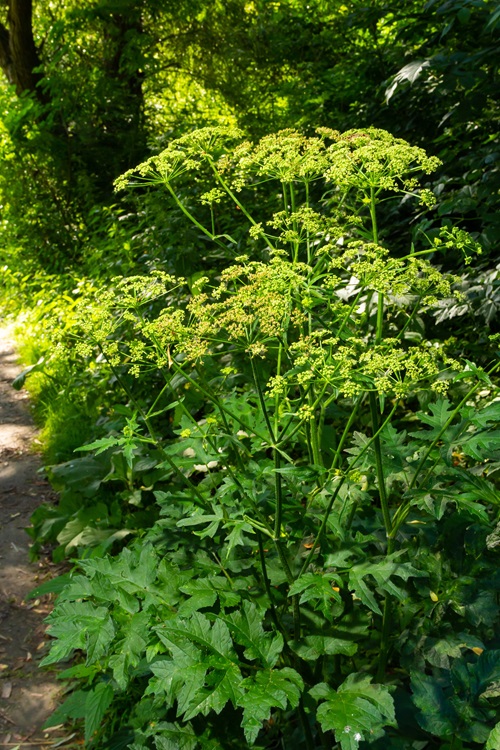
Botanical Name: Pastinaca sativa
Wild parsnip is a slowly invasive, poisonous plant commonly found near roadsides, ditches, and abandoned fields in Minnesota. With tall flowers that turn from green to yellow in fall, its sap—rich in furanocoumarins—can cause severe skin reactions including rashes and blisters when exposed to sunlight.
Avoid touching the plant’s sap and stay away from its cheerful flowerheads. If you do come in contact with it, wash with soap and water, and stay away from sunlight.
5. Stinging Nettle
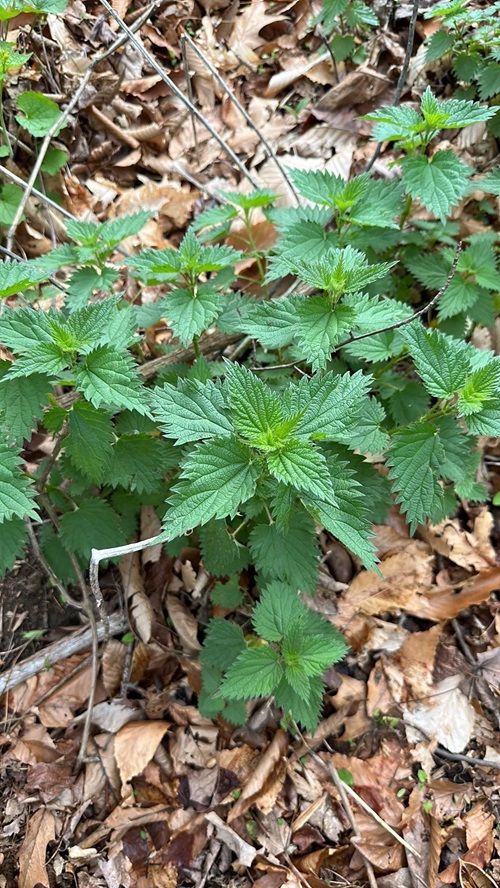
Botanical Name: Uritica dioica
“Sting like a nettle” refers to this plant’s painful sting! This poisonous herb dwells in moist, shaded areas like ditches, forest edges, and riverbanks. The giveaway is the toothed leaves covered in fine, hair-like thorns.
Stinging nettle has tiny, stinging hairs called trichomes that inject a toxin called histamine into the skin, causing redness, itching, and swelling. Although its leaves die back in the fall, touching any part of the plant can be irritating. It is not poisonous, but hurts all the same!
6. Grecian Foxglove

Botanical Name: Digitalis lanata
Don’t let the beautiful flowers of the Grecian Foxglove fool you. This poisonous plant, while medicinal, can cause nausea and affect your eyesight when used incorrectly. All parts of the plant contain cardiac glycosides, which are toxic to humans and pets and can even cause death!
This herb has easily recognizable upright clusters of tubular pastel blooms that fade towards fall. It can also be spotted by its tall, slender stems, which are usually covered in fine hairs.
7. Poison Oak
Botanical Name: Toxicodendron diversilobum
With foliage resembling those of an oak tree, even this deciduous shrub or tree has “leaves of three” that you should let be. Poison oak grows freely in wooded areas and along trails, and its foliage turns orange to red in fall.
It’s notorious for causing an itchy, blistering rash in people who come into contact with its sap. To stop the itch from both this one and poison ivy, you can use calamine lotion after cleansing the affected area with water.
8. Poison Hemlock
Botanical Name: Conium maculatum
Poison hemlock resembles wild carrots and parsley, prompting you to overlook it sometimes, thus increasing the risk of accidental contact. It is an invasive species that causes nausea, vomiting, and abdominal pain. You’ll start noticing these between 20 minutes to 3 hours after consuming it.
Alkaloid compounds like coniine and cyanine often cause these issues. These toxic compounds can also affect livestock and poultry.
9. Water Hemlock
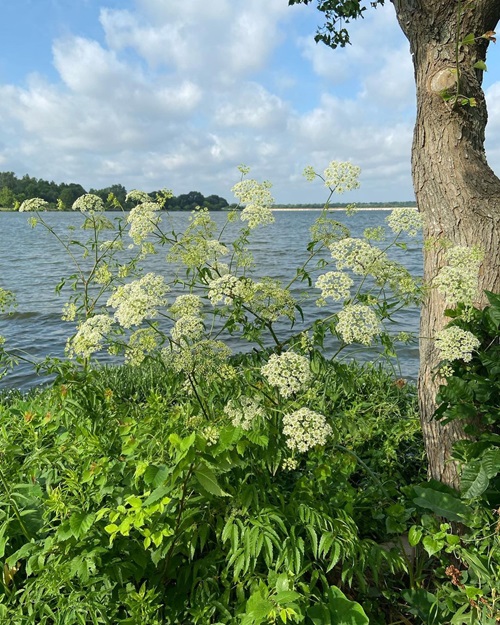
Botanical Name: Cicuta spp
One of the most poisonous plants in North America, water hemlock is unusually common in wetlands, marshes, and slow-moving streams all over the Gopher State. It’s a tall, slender plant with white flowers and hollow stems. The most distinguishing feature is its purple-spotted, carrot-like root.
Water hemlock contains toxic compounds, including cicutoxin, which cause severe illness and even death.
10. Buckthorn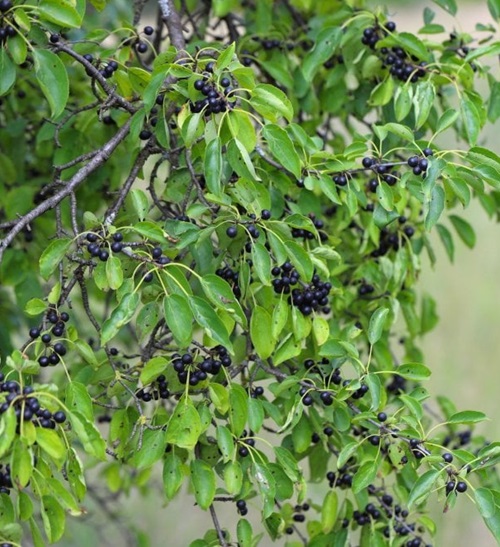
Botanical Name: Rhamnus cathartica
The next poisonous plant on our list is abundant in Minnesota. Buckthorn is easy to spot with its oval leaves, dark bark, and clusters of berries that turn black in fall. It is not poisonous to touch, but those berries are harmful if ingested. They’ll likely give you a stomach upset, nausea, and diarrhea.
You’ll find it in oak forests, savannas, prairies, and riparian woods. Its aggressive growth can also crowd out native plants, disrupting the ecosystem’s delicate balance.
11. Jimsonweed
Botanical Name: Datura stramonium
Known for its hallucinogenic properties, Jimsonweed is another poisonous plant you’ll find in the gardens and disturbed areas of Minnesota. It is a tall annual plant with trumpet-shaped flowers, and towards fall, its seed pods become more prominent.
All its parts contain toxic alkaloids that can cause dilated pupils, dry mouth, blurred vision, rapid heartbeat, and delirium.


